Any experienced chef knows that no kitchen is complete without a quality set of knives. They also know that if those knives are not sharp, they won’t perform to their greatest capacity. That is why we have created this quick guide to help you understand how to sharpen kitchen knives properly.
Test Your Knife Sharpness
Before you decide to sharpen your knives, you should determine if they need sharpening. Fortunately, there is a simple test that will help you do just that.
The Paper Test
The paper test is a quick way to tell if your knife requires sharpening. Here is how you can perform that test:
- Find a standard sheet of printer paper
- Use a firm grip to hold the paper with one hand
- Hold the knife in your other hand and attempt to slice through the paper
If your blade glides through the paper with no snags, you don’t need to sharpen it. However, if the edge struggles at all while passing through the paper, it is time for you to learn how to sharpen your kitchen knives.
Choose Your Sharpening Method
If you have tested your knife and found that it lacks sharpness, you need to put in some work to restore the blade’s edge. There are multiple methods that you can use to complete this task. In these sections below, we will give you a brief overview of how each of those methods works.
Whetstone
Using a whetstone to sharpen knives is one of the older methods available to you. It is also one that takes longer to master.
A whetstone, or sharpening stone, is a piece of stone, glass, or ceramic often has surfaces with different coarseness. These sides serve different purposes in the sharpening process.
Beginning with the coarser side of the stone, slide your knife along the stone at around a 20-degree angle. Make sure that you run both sides of the blade along with the stone.
After you have worked your blade along the coarse side, you should flip over your whetstone. Then you can complete the same process on the finer side. This will fine-tune your blade, and after you complete this step, your knife should be ready to use again.
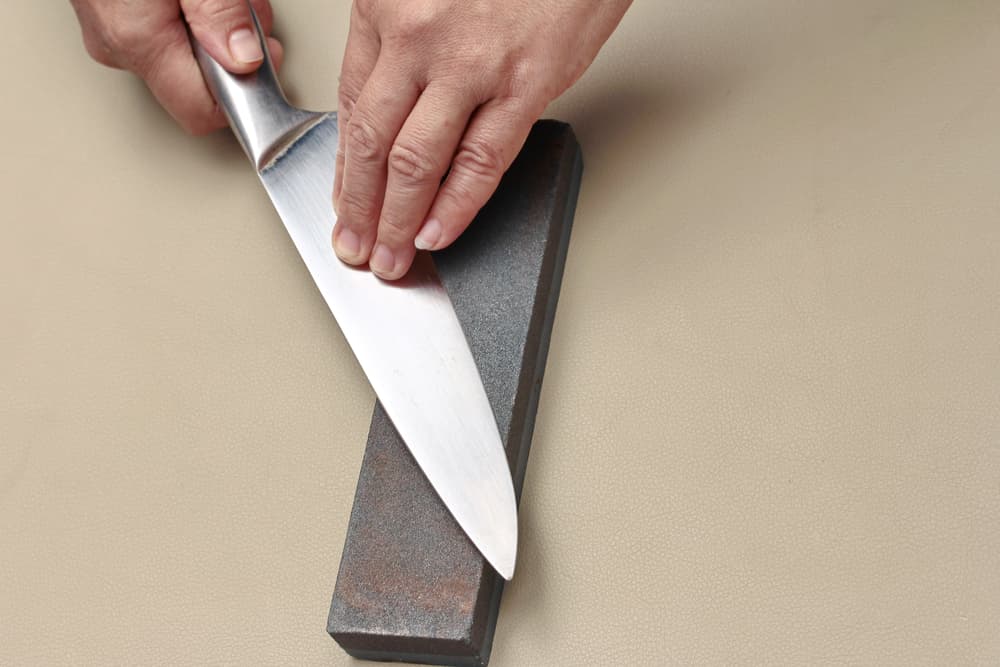
Manual Sharpener
A manual sharpener is essentially a simplified version of a whetstone. However, while these two tools play the same role, they look nothing alike.
Manual kitchen knife sharpeners typically have two slots. These slots work the same way as the coarse and fine sides of the whetstone.
The difference is that with a manual sharpener, you don’t have to worry about holding your knife at a precise angle. Instead, all you need to do is pull the blade through the built-in slots.
When you want to sharpen your knife, begin by using the coarse slot, which will remove metal from the blade. Then use the fine slot to finish the job.
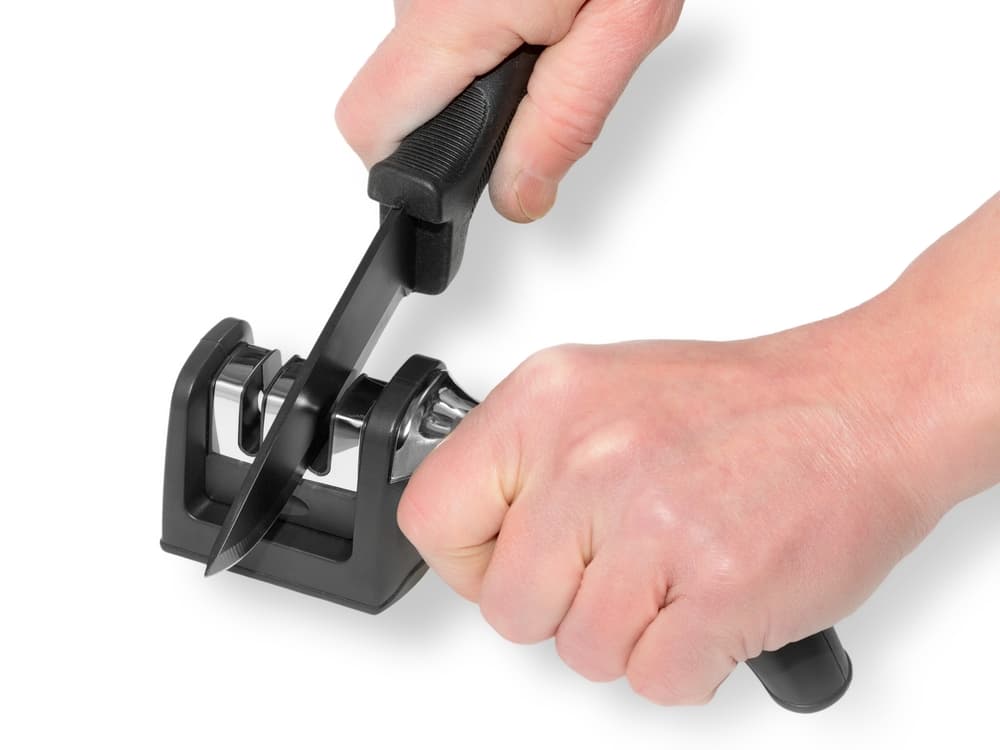
Electric Sharpener
Electric knife sharpeners are another helpful option any time that your blades are becoming dull. These devices are similar to the manual sharpeners we just described.
The advantage of these sharpeners is that they use electricity as a source of power, which will reduce the time it takes for you to sharpen your knives. All you need to do is slide the blade through the slot. Then the inner mechanism will work to remove metal from your knife much faster than a manual sharpener would.
Electric sharpeners add a degree of convenience, but they are not ideal for all situations. For instance, specific knives, such as French-style kitchen knives, do not respond well to electric sharpeners.
You should also pay closer attention to your knife when using an electric sharpener. Since these sharpeners are so efficient, they can cause you to sharpen your knife more than necessary.
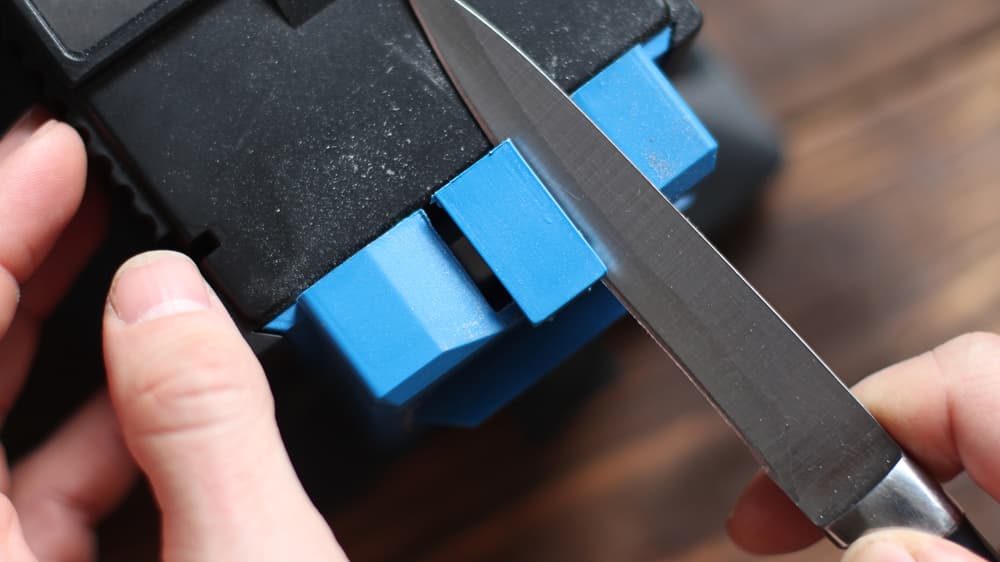
Honing Steel
Technically speaking, this last tool will not sharpen your knives. However, honing steels are essential in the knife sharpening process.
These metal rods will not remove any metal from your knife, meaning that they do not perform sharpening. Instead, they will realign the edge of your blade, making it more effective in the short term.
You should use your honing steel regularly to keep your knives in top condition. When that no longer does the trick, use one of the other tools we mentioned to sharpen your kitchen knives.
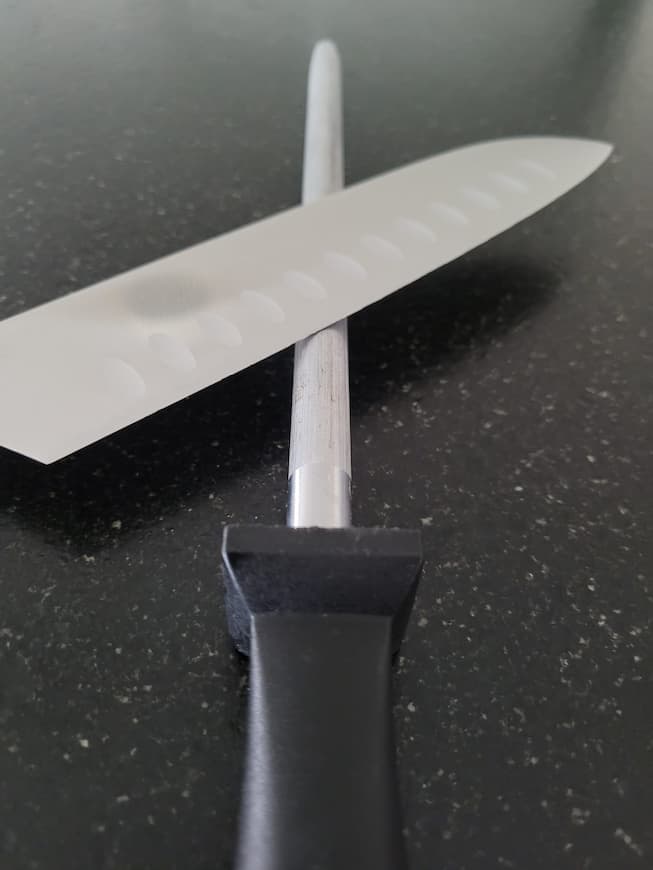
Last updated: September 24, 2023

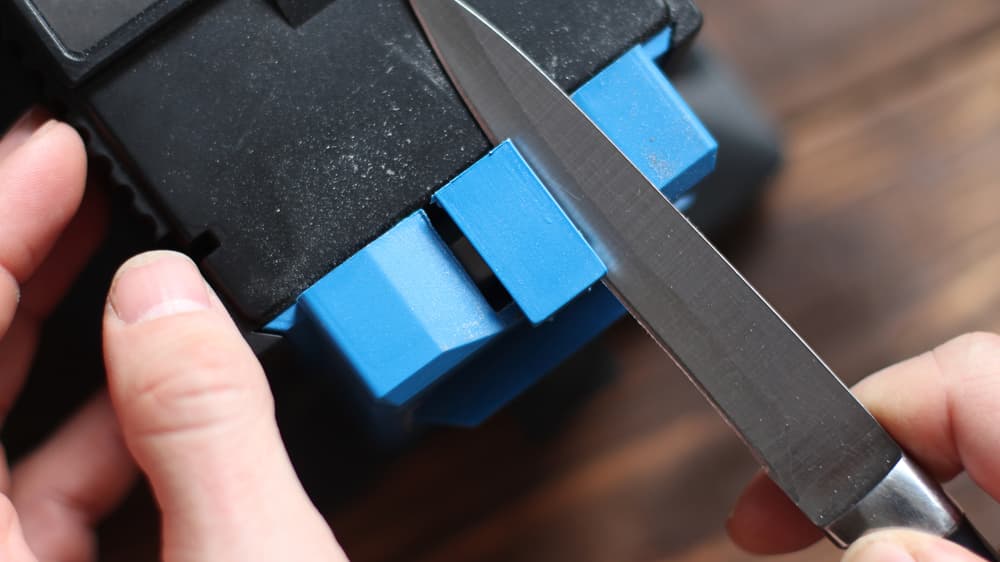

Comments are closed.